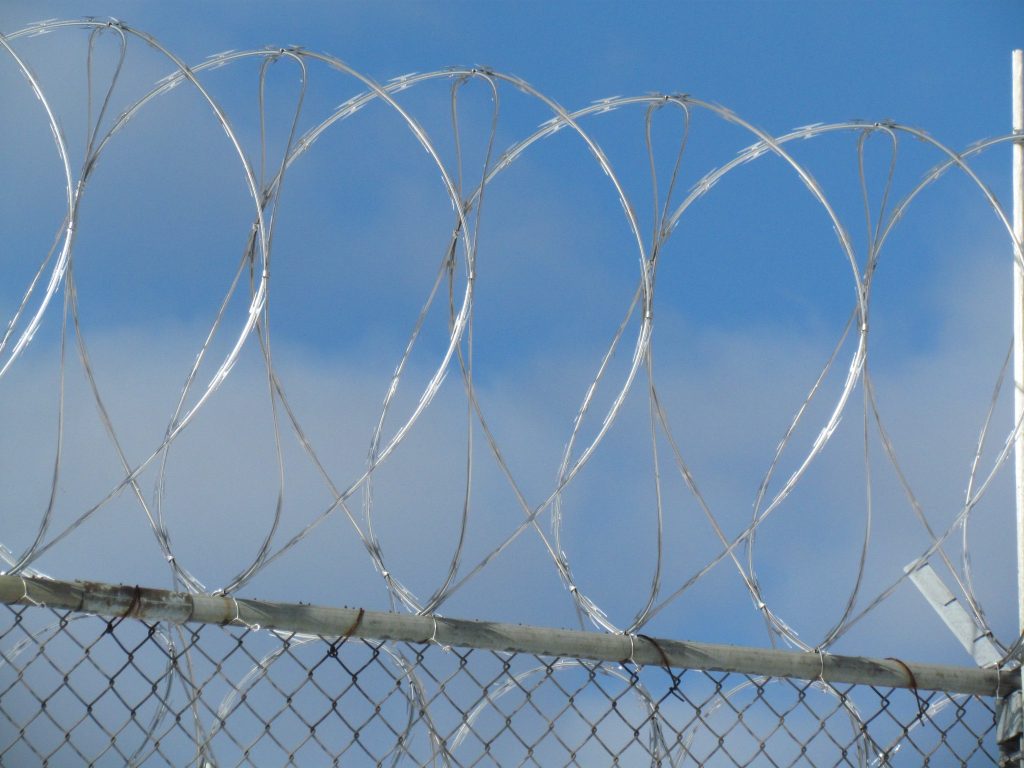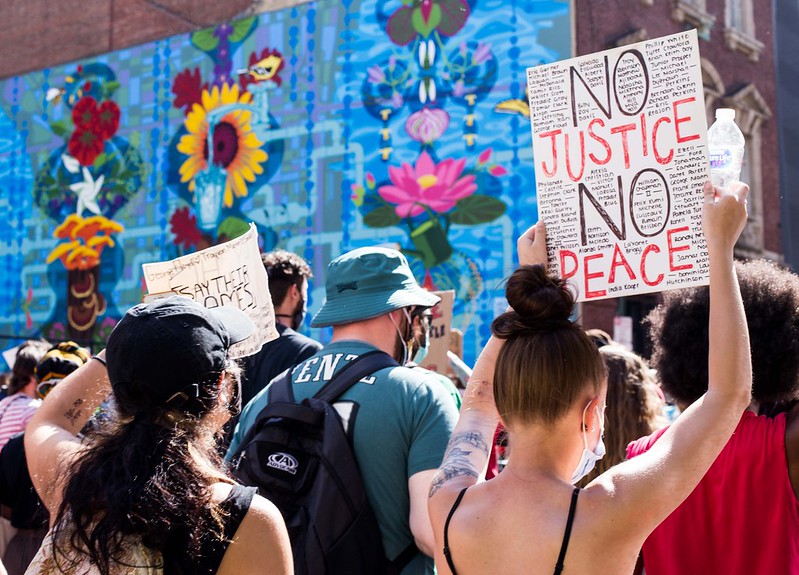“What we know is that jails and prisons repeatedly let women down; they do not meet mental health needs in a holistic way.”
—Serena Liguori, executive director of New Hour for Women and Children–Long Island, a nonprofit dedicated to supporting women and children impacted by incarceration.

During the 2020 presidential election, President Biden proposed a $20 billion grant to eliminate mandatory minimum sentences for non-violent crimes, fund community-based mental health and substance abuse services, focus on the rehabilitation of incarcerated individuals and end private prisons.
On January 26, 2021, Biden signed an executive order to begin to phase out contracts with private prisons. But given current congressional gridlock, other proposals in Biden’s $20 billion grant may not be able to pass—placing necessary steps to decarceration at a standstill.
With more individuals with mental illness in prisons than in hospitals, it is necessary to begin to address not only the ways in which Biden’s policies are a step in the right direction, but how much more money, time and energy is needed to address the mental health crisis in U.S. prisons.
“I think, as a community, we need to do so much more to embrace those who have challenges with mental health issues,” Serena Liguori, executive director of New Hour—a nonprofit supporting currently and formerly incarcerated women, their families and children—told Ms.
The mental health crisis is especially targeting women, who are three times more likely than men to experience physical or sexual abuse before becoming imprisoned and are more than 90 percent more likely to suffer mental health problems in prisons.
History and Misconceptions of Deinstitutionalization
Prior to deinstitutionalization of mental hospitals in the 1970s and ’80s, mental hospitals were carceral spaces. The movement toward deinstitutionalization was a response to mitigate the ways in which individuals with mental illness were treated. A wide misconception about deinstitutionalization, however, is that it led to mass incarceration.
“One of the reasons why there are many people with mental health issues in prisons is not because of deinstitutionalization or because such people belong in psychiatric hospitals,” Liat Ben-Moshe, assistant professor of criminal, law and justice at University of Illinois Chicago, told Ms. “It is because of the nature of confinement and incarceration itself, which is disabling and leads to mental and physical deterioration.”
Although deinstitutionalization, in some cities, led to incarceration, Ben-Moshe says this is not the case for all of the U.S. By placing blame on deinstitutionalization, she argues that we are not recognizing the way in which neoliberal policies and systems of inequality have grown the prison industrial complex.
Deinstitutionalization was one of the first forms of widespread decarceration—but it did not accurately help individuals with mental illness. The money saved from the closure of mental facilities was supposed to be put back into the community, specifically in mental health centers, to support those released. However, this never materialized.
Instead of helping individuals with mental illness, the United States, over time, formed another kind of institution: the prison industrial complex. There are three times more mentally ill individuals in prisons than in hospitals and 40 percent of individuals with serious mental illnesses go to prison at some point in their lives.
The Effects of COVID-19 on Incarcerated Individuals
The mental health of incarcerated individuals has especially worsened since COVID-19. In fact, symptoms of depression and anxiety have more than tripled since the pandemic started for non-incarcerated individuals—and mental illness and mental health difficulties are even more acute for those in prison.

Prison visits globally were suspended for fear of the coronavirus, further removing incarcerated individuals from social support. The suspension of these visits has been particularly detrimental as prison visits are proven to help reduce recidivism and improve mental health.
Furthermore, most prisons halted prisoner activities, resulting in incarcerated individuals spending approximately 23 hours in their cell per day without activities or contact with other incarcerated individuals. This mimics solitary confinement—another practice proven to worsen mental health.
“The pandemic has just exacerbated mental health conditions that have already been there. And if we don’t find ways to fund and support those who have been suffering with mental illness or mental health issues, we’re going to continue to see our jails and prisons … as the catch-all for everyone else,” said Liguori.
The lack of adequate mental health care support in prisons, especially during a pandemic, is similar to the history of deinstitutionalization of mental hospitals—both leave individuals with mental illness to cope on their own.
Alternatives to Incarceration
One out of 100 individuals in the United States is incarcerated and individuals with serious mental illnesses are 118 percent more likely to be sentenced to prison. Instead of helping these individuals, the United States is imprisoning them.
So, what should and can be done to help individuals struggling with mental illness?
Organizations such as New Hour believe community-based alternative nonprofits are essential to diverting incarceration. Liguori said these programs “have historically cost less money to run, and they ultimately keep us all safer, and they don’t cost millions of dollars to make happen.” In fact, although Long Island’s recidivism rate is 65 percent, once women go through one or more of New Hour’s programs, there was only a 2 percent recidivism rate.
The irony of the mental health crisis in the United States is that the cost of jailing adults with mental health concerns is two to three times the cost of keeping other people imprisoned. In fact, it is often cheaper to send nonviolent offenders to mental health treatment rather than prison. The problem is that there are not enough mental health services to help everyone and incarcerated individuals are often at the bottom of that list.
“It is a no-brainer. … The system that we have is failing. It’s failed us for a long time. We’ve talked about mental health issues for a long time. But it’s time to invest in our communities… [incarceration] ultimately creates more mental health issues, more trauma and a cycle of recidivism,” explained Liguori.
Joli Sparkman-Bayron, the reentry replication navigator at Project Place—a social service agency in Boston—agrees. “I know that, for me, personally, I had a lot of childhood trauma, prior to being incarcerated, as a lot of women that are incarcerated do. So for me, I believe that it exacerbated it. To the point where I definitely tried to hurt myself.”
Bayron experienced firsthand the mental health crisis in her prison: “I can tell you that the medication line was probably longer than your average concert … it would roll right into the next line … and would run … a couple of hours, at least.”
“When we incarcerate so many people, instead of treating the problem … they’re put away. So now they automatically think the problem is gone,” said Bayron. “But the problem is not going to be gone … There are new people that commit crimes, but it’s still the same thing that keeps happening. The players are all the same. …The game never changes. It’s just the faces.”
In order to combat this crisis, Bayron emphasizes the need to look at an individual’s backstory. As a social worker, she prioritizes listening to individuals rather than assuming benevolence or applying one kind of approach to understanding and working against incarceration.
To a similar degree, Judith Willison, associate professor of social work at Bridgewater State University, and Patricia O’Brien, associate professor at University of Illinois at Chicago, are deconstructing the way in which social work is uplifting the carceral state.
“Social workers work within the carceral state … and unwittingly, usually are complicit in those systems,” said Willison. “Our call to action really is for social workers to understand the social justice issues, the human rights violations that happen through mass incarceration in the carceral state and our responsibility to work towards dismantling the carceral state.”
In doing so, Willison and O’Brien emphasize the need for social workers to partner with people who have experienced incarceration and reexamine the reasons why someone might become incarcerated.
“We’ve always had kind of a struggle between what we call the case, and what we call the cause. And the case is just you, the individual in front of me, the helper,” said O’Brien, “but the cause is kind of looking at the context of what drove you to be in trouble, to what drove you to make the decisions you made.”
“If we’re not prioritizing helping our community understand how to address and heal, we’re really doing ourselves a disservice,” Liguori said. This is especially necessary as mass incarceration is built upon a system of racism which over-incarcerates communities of color who are less likely to seek counseling due to stigmatization.
Similarly, Ben-Moshe thinks the government must invest in communities in ways that “we don’t think are related to mental health but they’re 1,000 percent about mental health.” This includes health care for all, affordable housing and other means.
As such, social workers are just one component for change. Other models and ideas need to be used to dismantle the criminal justice system. After working within the prison industrial complex for 22 years, Willison said, “It wasn’t until I got out of the system that I began to understand what I had witnessed.”
We are all a part of the carceral state—it is our prerogative to change it.
Up next:





